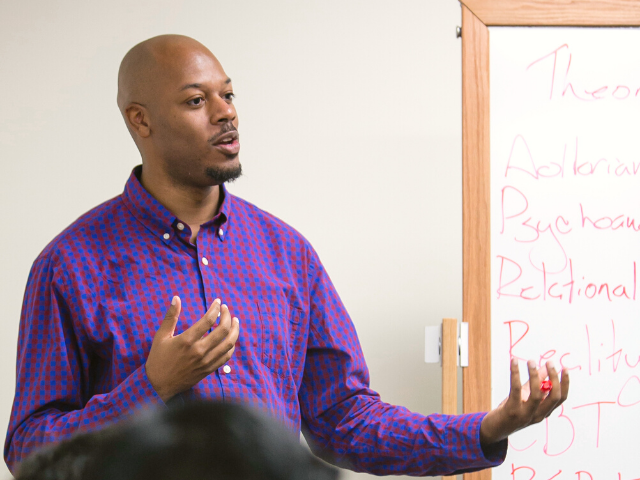Restorative Justice in Higher Education: An Interview With David Karp
As the scope of higher education evolves, restorative justice as a means to respond to harm in a community has come to the forefront on college campuses. Formerly concentrating primarily on student misconduct, restorative justice in higher education now finds itself engrained across various departments in institutions including student affairs, academic affairs, human resources and beyond.
David Karp, Ph.D. and Director of The Center For Restorative Justice at the University of San Diego unpacks the definition of restorative justice in higher education, its importance and benefits and how its practices will impact the future of higher education.
Can you please provide a definition of restorative justice in higher education?
Restorative justice (RJ) is a way to prevent or respond to harm in a community with an emphasis on healing, social support and active accountability. RJ includes a variety of practices with many rooted in indigenous and religious traditions. Some practices help prevent harm by helping people build relationships and strengthen communities. Other practices respond to harm by helping to identify harms, needs, and solutions through an inclusive and collaborative decision-making process.
In higher education, RJ is used to build community, such as orienting new students, faculty or staff; to respond to community-level concerns, such as racial disparities in college access or completion; and to respond to individual incidents of harm, such as theft, hazing, cheating or sexual harm.
Can you please provide an example of restorative justice being used in higher education?
At Dalhousie University, in Nova Scotia, Canada, female students in the Faculty of Dentistry filed a sexual harassment complaint about a private Facebook group maintained by several male members of their class and about the general climate and culture of the academic program. The various posts were made public and the case garnered significant media attention and public concern.
The Dalhousie RJ process included a restorative dialogue that involved the male students and the harmed parties and the process also included a significant investigation into the related campus climate and culture. With sensitivity to safety and to prepare the male students for participation in the restorative dialogue, the RJ facilitators arranged for the men to be educated about sexual harassment. Throughout these preparation sessions, individual meetings, and the restorative dialogue, the participants came to a full understanding of what happened and the significance of the incident and its aftermath.
As the RJ process concluded, the dentistry community was able to commit to plans of action to address the issues of climate and culture that the RJ process revealed and truly begin the process of rebuilding trust.
Why is restorative justice necessary in higher education?
With thousands of higher education institutions and millions of students, campuses operate as small communities–or even medium-sized cities. They are places where people learn, work, play, eat and sleep. Restorative justice practices support healthy community relationships and provide ways to respond when things go wrong.
Higher education is also a place for conducting research and teaching about restorative justice. RJ is now widely implemented in the criminal legal system and K-12 schools and it is important for law, criminal justice, and education programs to teach about RJ and provide evidence of effectiveness. Many see RJ as a way to end mass incarceration and disrupt the school-to-prison pipeline.
What are some of the most common misconceptions about restorative justice in higher education?
Many people on campuses believe RJ can only be used to respond to minor misconduct. In fact, research shows its effective application in cases of serious harm. It is also used to prevent harm by helping people learn how to build trust and resolve conflict before it escalates.
How are higher education institutions taking steps toward implementing restorative justice?
Many campuses have implemented restorative principles and practices. There are academic programs that teach RJ, including individual courses, certificate programs, and master’s degrees. There are legal clinics that train law students to facilitate restorative justice cases. There are offices on campuses that provide campus resources, some prioritizing RJ, such as the University of San Diego Office of Ethical Development and Restorative Practices.
The National Association of Community and Restorative Justice issued a policy statement calling for higher education institutions to:
- Incorporate RJ principles into its student, faculty, and staff governance policies.
- Provide technical assistance and training to faculty, students, and staff on the practice and implementation of restorative practices.
- Encourage faculty to offer coursework in RJ across the liberal arts, particularly in disciplines that prepare students for professions using restorative practices such as social work, education, higher education administration, public policy, law and criminal justice among others.
- Support research programs in RJ including basic research on the theory and causal mechanisms of RJ and applied research on its effectiveness.
- Provide workshops for faculty on the pedagogical use of restorative practices in their classrooms.
- Develop RJ programs in student affairs that respond to student misconduct and threats to a positive and inclusive living and learning climate, and provide opportunities for social-emotional learning, relationship-building, traumatic incidents, and skills in conflict resolution and civil discourse. Areas of primary concern include student conduct, residential life, diversity and inclusion, religious and spiritual life, fraternities and sororities, and athletics.
- Encourage human resource departments to incorporate restorative principles and practices to improve the campus workplace for faculty and staff in their relations with one another as well as their relationships with students.
- Support RJ through civic engagement and service learning. Provide opportunities for students to conduct independent studies, internships, and community service with community-based RJ organizations and restorative initiatives in K-12 schools and criminal justice agencies. Encourage community-based research efforts that support RJ organizations. Provide policy analyses for RJ legislation.
What role will restorative justice play in shaping the future of higher education?
Restorative justice is an approach that prevents and responds to harm. There is no shortage of controversy, conflict, and direct harm in higher education and many are looking for innovative answers to address this.
Higher education professionals can incorporate restorative practices into their work, particularly those who are pursuing leadership positions. Having a background in RJ is particularly useful for people working in student affairs and human resources. They often find that not only is RJ effective, but it boosts morale and makes one’s work more meaningful and rewarding.
Shape the future of higher education with a degree rooted in restorative justice
As an international leader in restorative justice, SOLES (School of Leadership and Education Sciences) is committed to educating others on the impactful practices of restorative justice. Learn more about our Center for Restorative Justice and how it is preparing the next generation of diverse leaders.
Students also have the opportunity to earn an additional graduate certificate in Restorative Justice Facilitation & Leadership when pursuing their degree.
Schedule a meeting with a member of our graduate admissions team to learn more about our program’s unique features like our assistantships and scholarship opportunities!



